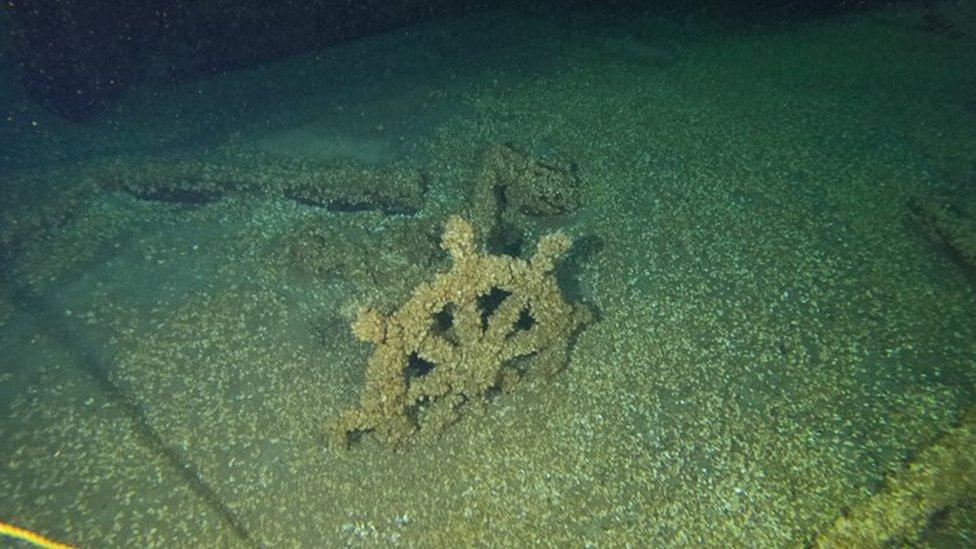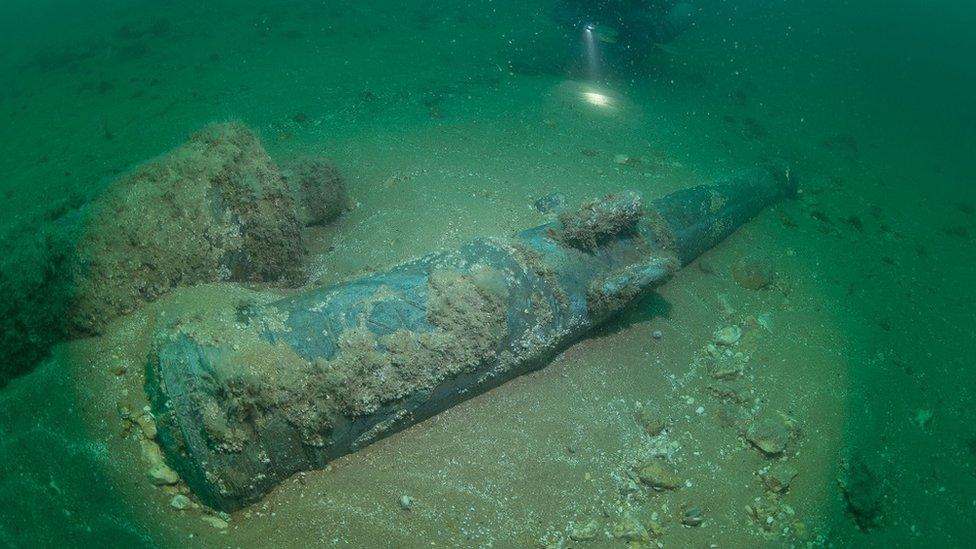San Jose galleon: Shipwreck to be recovered with billions in treasure
- Published
- comments

The Colombian government are set to recover what experts have called the 'Holy Grail of shipwrecks.'
The San Jose ship was sunk in 1708 by the British near the Colombian city of Cartagena in South America.
The ship, carrying one of the largest hauls of valuables ever lost at sea, is estimated to be worth around £16 billion.
Colombia's President Gustavo Petro wants to recover the shipwreck quickly and there is an ongoing debate over who owns the treasure.
Who owns the treasure on the San Jose?
San José: Two new shipwrecks found off Colombian coast (2022)
The San Jose was an old Spanish galleon - a large boat with huge sails and many decks.
It's thought the ship was carrying treasure collected over six years, including emeralds and 11 million gold coins. That's why it's been called the 'Holy Grail of shipwrecks' - because of its cargo.
However there has been debate over who will claim the treasure.
A US salvage company argue they first found the wreck in 1981 and made a deal with the Colombia government so they could have half of the treasure when it was recovered.
But there have been other claims to the treasure including Spain and Bolivia's indigenous Qhara Qhara nation, which say the Spanish took the wealth from their people.
The Colombia President Gustavo Petro has made recovering the shipwreck a priority before his term in charge ends in 2026.
"The president has told us to pick up the pace," the Colombian Culture minister Juan David Correa told Bloomberg.
What was the San Jose galleon?

The San Jose was sunk during heavy fighting with the British in 1708 off the coast of Colombia in South America
The San Jose galleon was a Spanish ship, sunk by the British in June 1708.
It was transporting treasure to Spain's king to help pay for his war against the British.
Marine experts think the ship could tell them more about political and social life at the time in the early 1700s.
- Published10 September 2023

- Published12 October 2023

- Published27 January 2023

